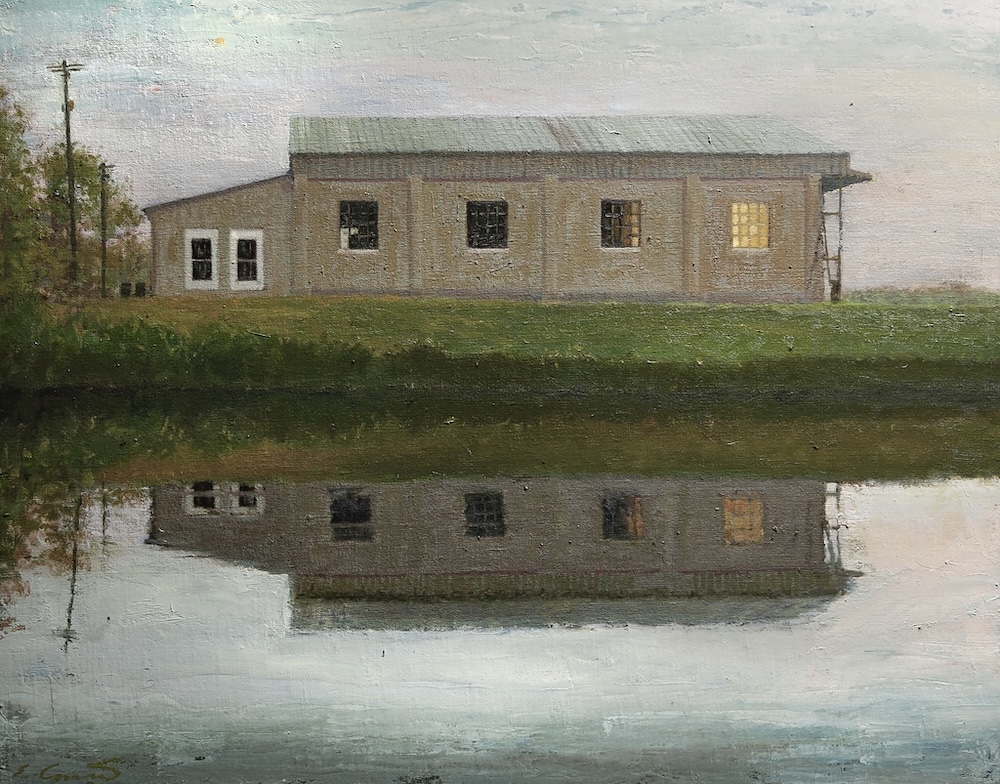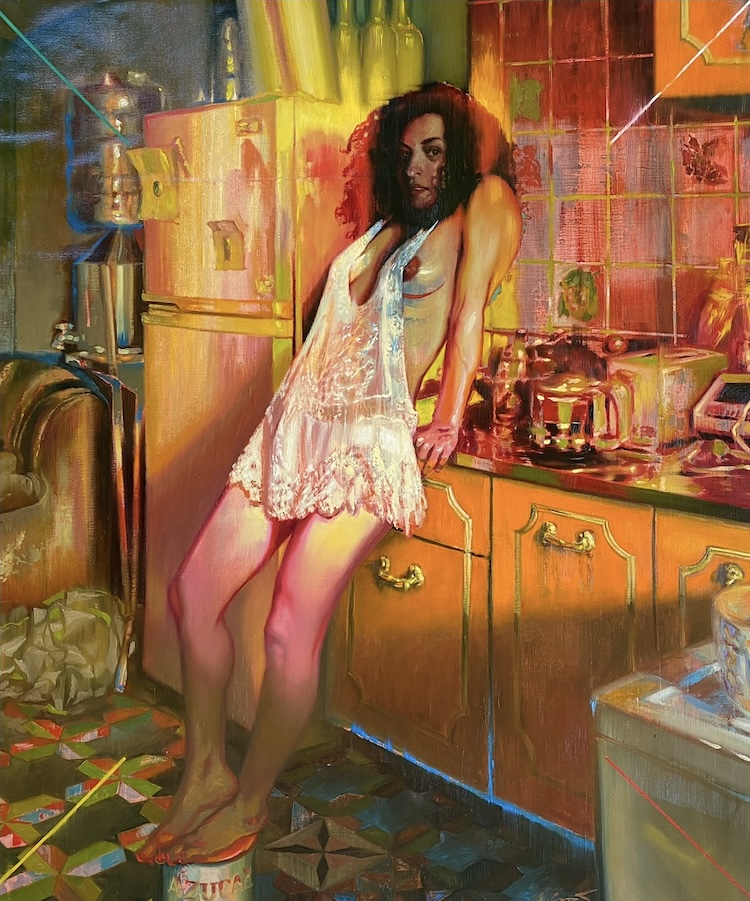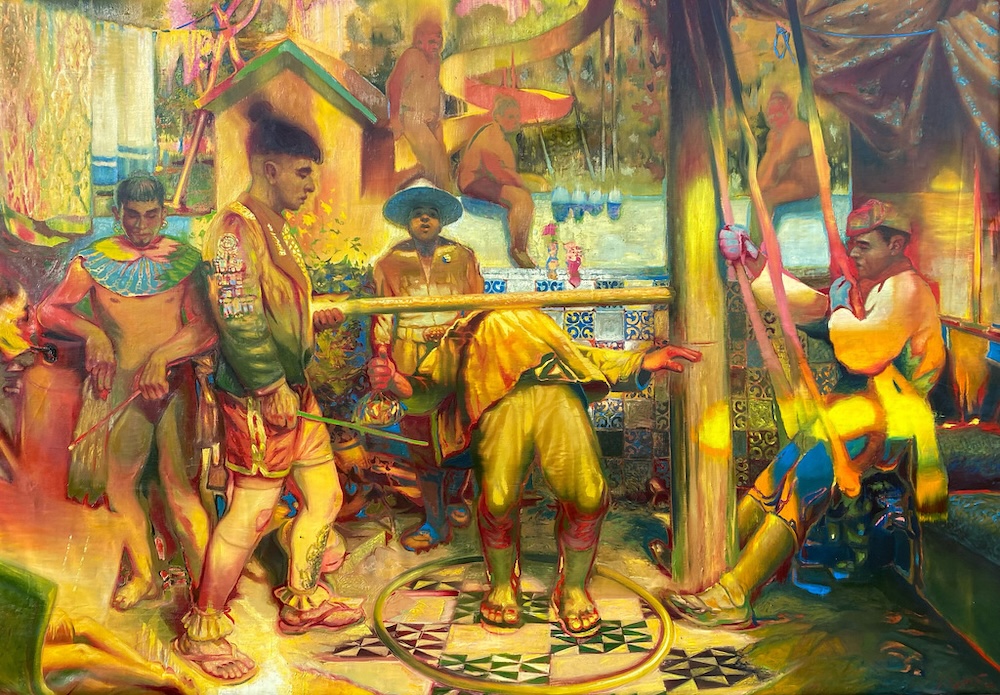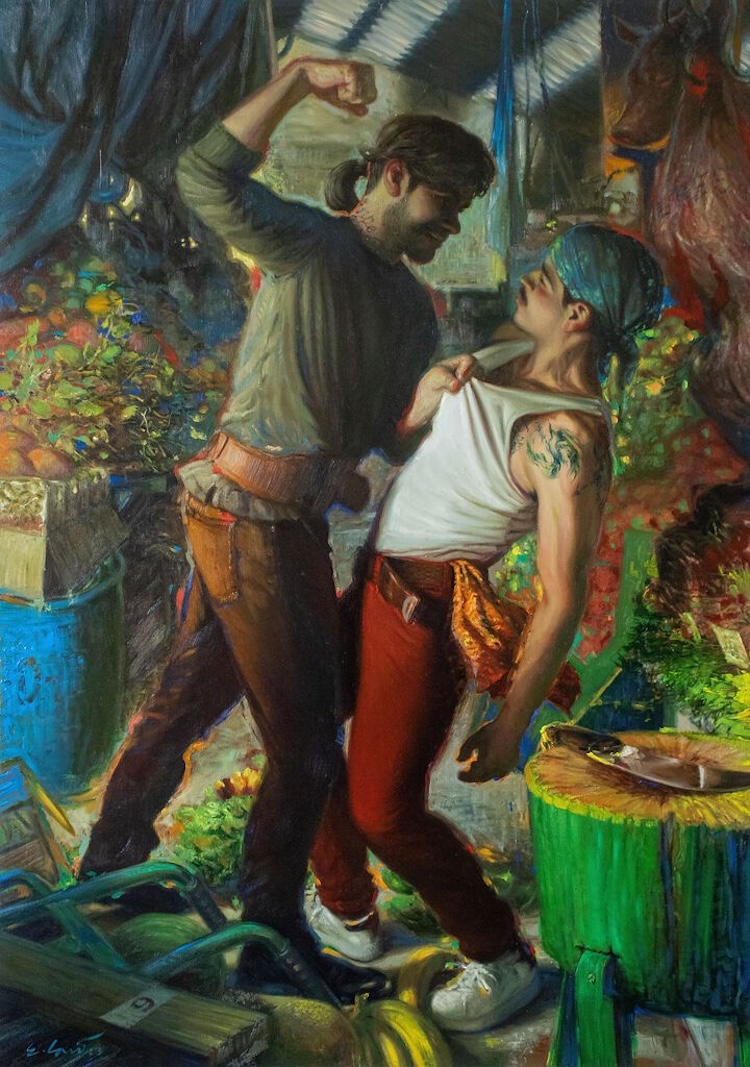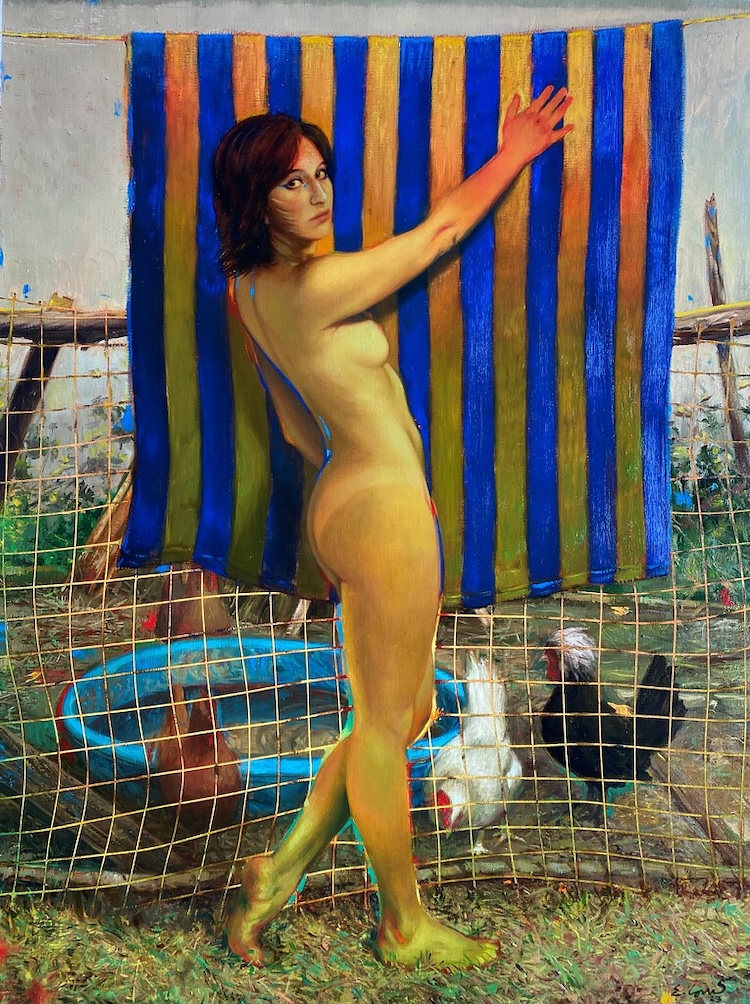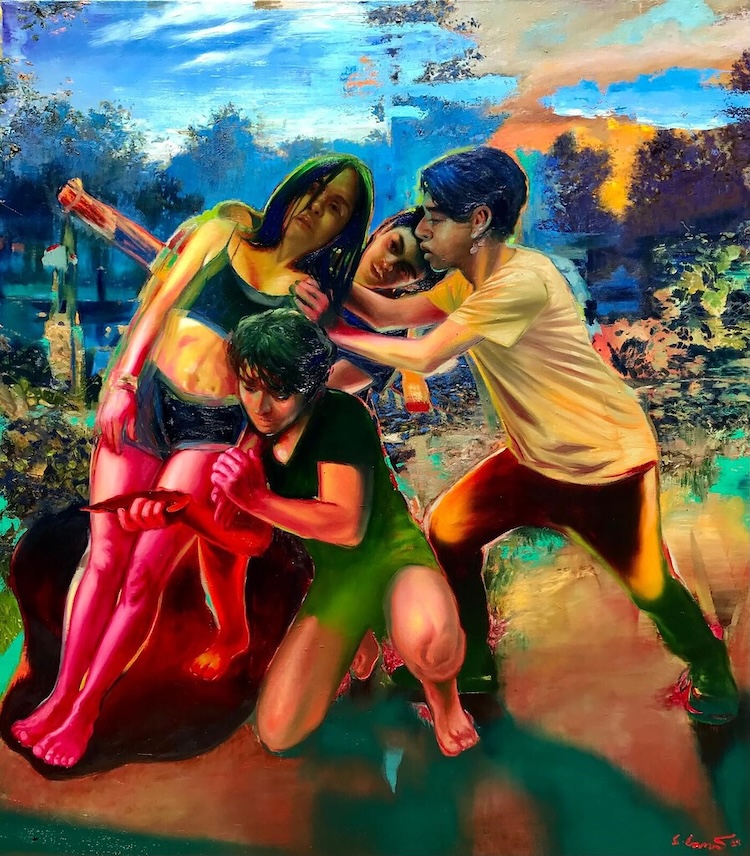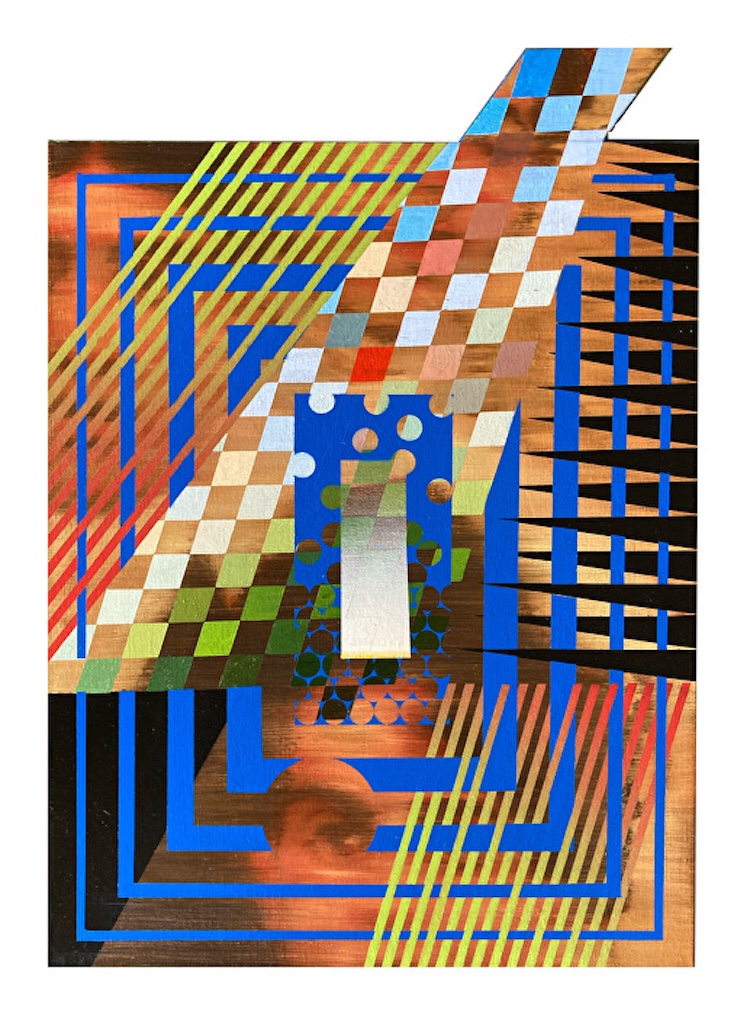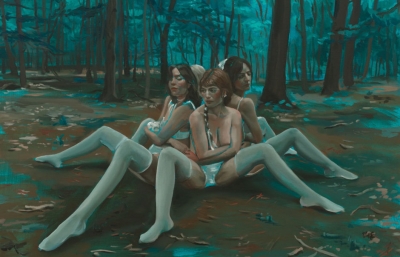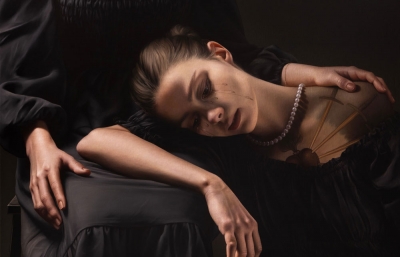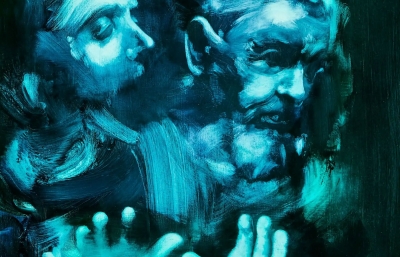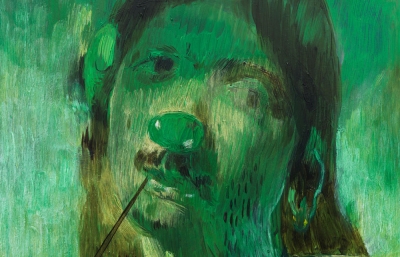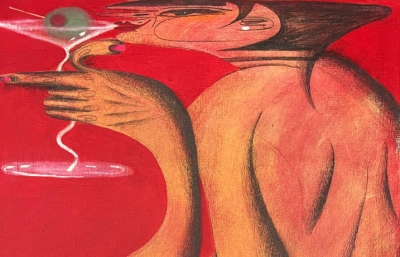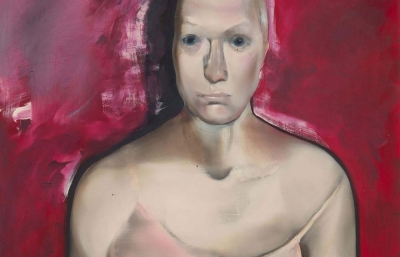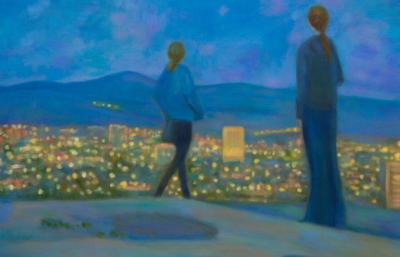In conjunction with winning "Best in Show" at this year's 16th annual Surreal Salon at the Baton Rouge Gallery, we sit down with Mexican painter, Edgar Cano-Lopez, to discuss his winning work, Mexican surrealism and how the theater and stage helped him develop his own painted scenes.
Juxtapoz: What were your initial thoughts when you were going to turn in work for the Surreal Salon? What were you thinking was going to happen and what did you know about the history of the Salon?
Edgar Cano-Lopez: Since the beginning of every contest or juried show, it does exist a natural enthusiasm and expectation just with the idea to participate in a new exhibition, overall, when the exhibition is the well-known Surreal Salon at the BRG. In my permanent goals there is one which is showing as much as I can the current collection in progress, which I have started at 2021 in my studio at the Northwestern State University of Louisiana, place where I work as Assistant Professor. The mentioned collection is supported by the Mexican Government under the System of National Creators of Art. Baton Rouge Gallery’s Surreal Salon fit the theme well. About the Surreal Salon I knew little, but about the gallery, I knew more, and I think is a wonderful place to exhibit, that’s the reason because I was even disappointed that I thought the time had passed to register my art, luckily it was not so. I have always sought of opportunities to show my work in this and other spaces, either museums, galleries, and cultural institutions.
A lot of your work deals with sort of these in-between moments, surrealism meets the everyday. How did you develop your style?
My style, in my opinion is in a process of constant definition, have been years to be able to constitute the current collection, which consists of almost 30 works of medium to large format. At first, I try to paint against a tradition and especially at that time of my precious and radically realistic painting, I perceive in this line aesthetic accents of darkness from a perspective beyond the everyday and ordinary.
I intend a visual game between disruption and recognizable, also nonsense, as in dreams, although my work is not based on them, but rather on what I see in everyday life and that is where my interest in what I can call perpetual surrealism participates. I assume that what we see and what we know within my works, within its narrative, unfolds on the more subtle side and that we least expect, breaks down to a new direction that makes change even our perception, confusing us with reality or the impossible.
What did work in theater and stage design help in working on your studio paintings?
The theater and behind the scenes bring me many memories, this discipline for me was a kind of introduction to metaphors, nonsense and visceral, it is of these ideas that I build my current paintings. I participated in some plays, designing scenarios and artifacts around amazing and renowned people in my home state. I was often involved with unconnected and ephemeral objects, as well as large background paintings. I rescued from this experience the great formats in technique and unfinished narrative or multiple endings in my themes.
How does the history of surrealism in Mexican art play into your practice?
Certainly, Mexican surrealism is widely known and celebrated, from my position, sometimes without a defined intensity I include in my work details or visual quotes that can be perceived and connected with this artistic movement, thus offering a sui generis perspective from my linens. It should be said that my own ideas coincide in my work without an objective approach or argument with those manifestations of Mexican pictorial surrealism, as well as ancestral symbols prior to the colony. I remember the exhibition Surrealism Beyond Borders at Tate London, it was a very deep aesthetic motivation and a patriotic pride to see Latin American works in the show, especially those of Remedios Varo, Leonora Carrington and Frida Kahlo among others.
Talk about the work that won best in show, Life is Beautiful? What is the story behind this one?
My painting Life is Beautiful (2022), is a collection of circumstances peculiar to my life in relation to the central character of the work. Gabriela enjoys a literal and unconnected context, perceived illusions, and possible allegories around her, which does not attend. The outside noise and visual distraction do not exist for her, she lives in itself. It seems that she comes from a land as simple as enchanted, where the greens romp and magic is not named. Where a brush stroke unfolds in destiny and a word is enough to be conjured.
The painting is conceived in a format that allows the viewer to enter it, to travel as the color palette does, with a natural voluptuousness that is recognized in the violence of the stroke and in the dimness of the shadow, in the surreptitious background and in the wild texture.
Now that you have won, how do you take this recognition back into your studio to make new works?
Winning a prize is always a chance, a joy and a responsibility, I bring this recognition to my study as a reflection, a point in favor of this new version of my work. I take it as if it did not count, it only sits on the personal summary with gratitude to all those who made the project possible, to the BRG gallery and its team, the curatorship, the assembly, and all those who appreciated the collection, especially the curator of the project, Beth Cavener.
For now, it is in my mind to continue with the same dedication and discipline in the project proposed from 2020, be more aggressive and trust more in the lines and ideas that come to my mind. I will be more careful about the details to include in my works, as well as freer and more open to all possibilities.
https://www.batonrougegallery.org/surreal-salon


